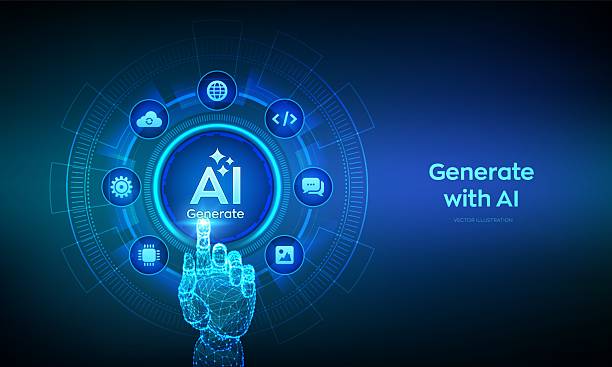### What is Internal SEO and Why Does it Matter?
[Image of woman using smartphone for online payment]
Internal SEO, or On-Page SEO, refers to the set of actions you take within your website to improve your site’s ranking in search engines like Google.
These actions include optimizing content, site structure, HTML tags, and other factors related to the site itself. The importance of internal SEO lies in helping search engines better understand your site’s content and display it to relevant users.
A site with strong internal SEO is more likely to rank higher in search results and attract more organic traffic.
Without proper internal SEO, your efforts in external SEO (Off-Page SEO) will not achieve the desired results.
Internal SEO plays a fundamental role in the overall success of your SEO strategy.
**Internal SEO** involves optimizing various aspects of your website to improve its ranking and visibility in search engine results pages (SERPs).
Unlike external SEO, which focuses on factors outside your website (such as backlinks), internal SEO focuses entirely on optimizing elements that you directly control.
This optimization is crucial to ensure that search engines can effectively crawl and index your website and understand what it is about.
>Are you dissatisfied with the low sales of your online store?
>Rasawwb is your solution for having a professional and high-selling online store.
>✅ Significant increase in sales and revenue
>✅ Easy and enjoyable shopping experience for customers
>⚡ Get a free consultation from Rasawwb right now!
### Keyword Research – The Foundation for Internal SEO
[Image of businessman using laptop with technology AI icon]
Keyword research is the cornerstone of any successful internal SEO strategy.
This process involves identifying the words and phrases that users use when searching for information related to your business.
By understanding these keywords, you can optimize your content to rank well for these terms and attract targeted traffic to your site. There are various tools available for keyword research, including Ahrefs, Ubersuggest, Keyword Tool, and Google Keyword Planner.
These tools help you find search volume, competition levels, and related keywords.
When choosing keywords, look for phrases that have both a suitable search volume and are relevant to your site’s content.
By identifying high-volume, relevant keywords, you can optimize your content to target these terms and increase your chances of appearing in search results.
However, it is important to avoid keyword stuffing, which can lead to penalties by search engines.
Instead, incorporate your keywords naturally and strategically throughout your content, including headings, subheadings, body text, and image alt text.
### Optimizing Titles and Meta Descriptions
[Image of businessman holding smartphone at office desk]
Title Tags and Meta Descriptions are among the most important elements of internal SEO.
Titles are displayed at the top of the browser page and in search results, while meta descriptions provide a summary of the page content. Both of these elements should be carefully optimized to be attractive to users and incorporate relevant keywords.
Titles should be short and concise (maximum 60 characters) and have the main keyword of the page at the beginning.
Meta descriptions should be compelling and persuasive (maximum 160 characters) and tell users why they should click on your link. Internal SEO optimization of title and meta tags is one of the most important actions to increase site ranking.
For example, if your page is about “Best Practices for Internal SEO”, the title could be: “Best Practices for Internal SEO – Comprehensive Guide” and the meta description could be: “In this comprehensive guide, learn about the best practices for internal SEO and increase your site’s ranking in Google.”
| Element | Description |
|---|---|
| Title Tag | The title of the page that is displayed in search results and at the top of the browser. |
| Meta Description | A summary of the page’s content that is displayed under the title in search results. |
### Content Optimization – Content is King
[Image of SEO analysis and business concept]
Content is king! This famous phrase in the world of SEO shows the unparalleled importance of high-quality content.
Your content should be valuable, informative, engaging, and relevant to the needs of your audience.
Avoid producing duplicate or copied content, as this can damage your site’s ranking. Update your content regularly and use relevant keywords in the text, headings, and subheadings.
But remember that overuse of keywords (Keyword Stuffing) can have the opposite effect.
Try to place keywords naturally and in the appropriate context within your text.
Successful internal SEO requires the production of high-quality, unique content that meets users’ needs.
Attractive and informative content not only attracts more visitors but also reduces bounce rates and increases time spent on the site, which also helps improve rankings.
>Are you worried that your company’s old website will scare away new customers? Rasawwb solves this problem by designing a modern and efficient corporate website.
>✅ Increases your brand’s credibility.
>✅ Helps attract targeted customers.
>⚡ Contact Rasawwb for a free consultation!
### Image Optimization – Using Alt Tags
[Image of bitcoin concept]
Images play an important role in attracting users’ attention and improving the user experience.
But images alone cannot help your site’s SEO.
To ensure that search engines can understand your images, you must optimize them. One of the most important actions in image optimization is using Alt tags.
The Alt tag is an alternative text for the image that is shown to users if the image cannot be displayed.
Also, search engines use Alt tags to understand the content of the image. The Alt tag should be descriptive and relevant to the content of the image and include the relevant keyword.
Also, reduce the size of the images to increase page loading speed.
In addition to the Alt tag, the image file name should also be optimized.
Use descriptive names that are relevant to the content of the image and avoid using default names like “IMG_1234.jpg”.
Internal SEO of images is one of the important optimization cases.
### URL Structure Optimization – Permanent Links
[Image of AI artificial intelligence generates analytics software]
URL structure or permalinks play an important role in your site’s SEO.
URLs should be short, concise, and relevant to the page content.
Avoid using long and complex URLs that contain incomprehensible characters. The best approach is to create URLs based on the page’s main keywords.
For example, if your page is about “Internal SEO Training,” the URL could be: “/internal-seo-training/”.
Also, avoid using uppercase letters and spaces in URLs and use hyphens (-) instead of spaces.
A clear and logical URL structure helps search engines understand the hierarchy and organization of your website.
This can improve the user experience and potentially lead to higher rankings.
When creating URLs, use relevant keywords, keep them short, and avoid unnecessary characters or numbers.
### Internal Linking – Creating Links Between Pages
[Image of ads management digital marketing commerce online sale concept]
Internal Linking refers to creating links between different pages of your site.
Internal linking helps search engines better understand your site’s structure and find related pages.
Also, internal linking can help improve the user experience and direct users to other pages of your site. When internal linking, use appropriate anchor text.
Anchor text is the text you click on to go to another page.
The anchor text should be descriptive and relevant to the destination page and include the relevant keyword.
Avoid linking to irrelevant pages or using generic anchor text such as “click here”.
| Feature | Description |
|---|---|
| Anchor Text | The text you click on to go to another page. |
| Relevance | Links should lead to pages relevant to the content of the current page. |
### Website Speed Optimization – User Experience
[Image of businessman using a laptop with analytics and data management]
Website speed is one of the important factors in SEO and user experience.
Users expect your site pages to load quickly.
If your site is slow, users will leave it and visit other sites.
Google also gives importance to website speed and ranks faster sites better in search results. To optimize website speed, you can use various methods.
Reducing the size of images, using a cache system, optimizing codes, and using a CDN (Content Delivery Network) are among these methods.
Also, you can use various tools such as Google PageSpeed Insights to check your site’s speed and get optimization suggestions.
Internal SEO site speed for improved user experience.
Optimizing website speed is crucial for internal SEO and user experience.
A website that loads quickly keeps visitors happy, reduces bounce rates, and potentially leads to higher search engine rankings.
To optimize website speed, compress images, enable browser caching, and use a Content Delivery Network (CDN).
>Do you know that a weak company website loses many opportunities every day? Solve this problem forever with professional corporate website design by Rasawwb!
>✅ Creating a powerful and reliable image of your brand
>✅ Attracting targeted new customers and increasing sales
>⚡ [Get a Free Website Design Consultation]
### Responsive Design – Mobile-Friendliness
[Image of cyber login and password concept with a smartphone]
Today, a large portion of website traffic comes from mobile devices (mobile phones and tablets).
Therefore, responsive design is essential for your site.
Responsive design means that your site automatically adapts to the screen size of different devices and provides a suitable user experience. Google gives importance to mobile-friendly sites and ranks them better in search results.
To check your site’s mobile-friendliness, you can use the Google Mobile-Friendly Test.
Responsive design is a vital component of on-page SEO because it ensures that your website provides an optimal user experience across all devices, including desktops, tablets, and mobile phones.
Since Google prioritizes ranking websites based on mobile-friendliness, having a responsive website can significantly impact your search rankings.
### Using Schema Markup – Better Understanding of Content by Search Engines
[Image of a hand holding a magnifying glass focusing on the word SEO]
Schema Markup is a code that helps search engines better understand the content of your site pages.
By using Schema Markup, you can provide detailed information about products, articles, events, and other types of content to search engines.
This can cause your site to be displayed in a more attractive way in search results and increase the click-through rate (CTR). Schema Markup is added to site pages through JSON-LD codes.
To create the appropriate Schema Markup, you can use the Schema Markup Generator.
Internal SEO with Schema Markup for content understanding.
By implementing schema markup, you can provide important information about your website’s content to search engines, such as the type of article, author, publication date, and ratings.
This can help search engines better understand your content and display it in a rich way in search results, improving visibility and click-through rates.
#### Frequently Asked Questions
| Row | Question | Answer |
|---|---|---|
| 1 | What is Internal SEO (On-Page SEO)? | Internal SEO refers to a set of actions taken inside a website (on its pages) to improve the site’s ranking in search engine results. This includes optimizing content, site structure, and HTML codes. |
| 2 | Why is Internal SEO important? | Internal SEO helps search engines better understand the page’s content and determine whether that page is relevant and valuable to users’ searches. This better understanding leads to higher rankings. |
| 3 | What is the first and most important step in Internal SEO? | Keyword Research is the most important initial step. By finding suitable keywords, you can produce targeted content relevant to users’ needs. |
| 4 | What is the role of the Title Tag in Internal SEO? | The title tag is one of the most important ranking factors and should include the main keyword. This tag is displayed as the page title in search results and affects the click-through rate (CTR). |
| 5 | What is the importance of Meta Description? | The meta description does not directly affect rankings, but by providing an attractive summary of the page’s content in search results, it can encourage users to click and thus increase the click-through rate (CTR). |
| 6 | Why is the use of headings (H1, H2, etc.) important in content? | Headings help structure content and improve readability for users and search engine crawlers. Using keywords in headings also helps the search engine better understand the topic. |
| 7 | What does Image Optimization in Internal SEO include? | It includes compressing images to reduce size, using descriptive and relevant file names, and filling the Alt tag (alternative text) with relevant keywords to help search engines understand the content of the image. |
| 8 | What is meant by Internal Linking in Internal SEO? | Internal linking refers to creating links between different pages of a website. This helps to spread page equity (Link Equity), improve user experience, and helps search engine crawlers discover new pages. |
| 9 | Why is Page Speed important for Internal SEO? | Page speed is a direct ranking factor and heavily affects the user experience. Slow pages can increase bounce rates and reduce user engagement. |
| 10 | What role does quality content play in Internal SEO? | Quality content, comprehensive, unique, and valuable to the user, is the core of Internal SEO. This content not only attracts and retains users but also sends positive signals to search engines and helps to improve ranking. |
And other services of Rasawwb Advertising Agency in the field of advertising
Smart Digital Branding: An exclusive service for customer attraction growth based on precise audience targeting.
Smart Conversion Rate Optimization: An exclusive service for online growth based on the use of real data.
Smart Conversion Rate Optimization: A creative platform for improving click-through rates with a SEO-centric content strategy.
Smart Social Media: An effective tool for online growth with the help of precise audience targeting.
Smart Conversion Rate Optimization: An exclusive service for customer attraction growth based on customizing the user experience.
And over a hundred other services in the field of internet advertising, advertising consulting, and organizational solutions
Internet Advertising | Advertising Strategy | Advertorial Report
#### Resources
Faraz SEO – What is SEO and why is it important?
,Aryanik – What is Internal SEO?
,How – What is Internal SEO or On-Page SEO?
,Zoomit – Comprehensive Guide to Internal SEO (On-Page SEO): From Start to Strategy
? In today’s competitive world, a strong online presence is the key to your success. Rasawwb Afarin takes your business to the peak by offering comprehensive digital marketing solutions including responsive website design, SEO, and social media management. Build your digital future with us.
📍 Tehran, Mirdamad Street, next to Central Bank, South Kazerun Alley, Ramin Alley No. 6




